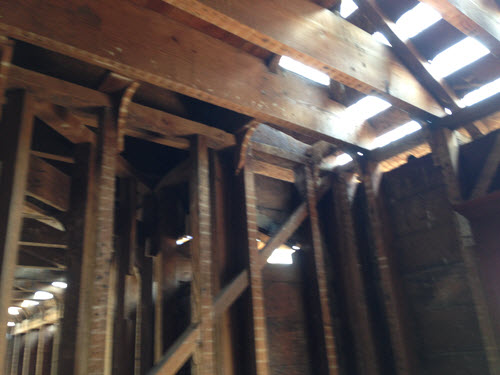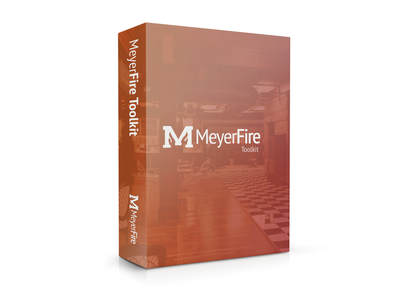|
What concerns should I have about hanging from old wood? Like very old wood, almost petrified? I'm doing an NFPA 13R job for an old historic building that has been moved. I don't know how old, but it uses full dimension wood. The 2x's look like they measure 2-inches thick.
I'm wondering what hanging to this old dry wood is going to be like? Do they need to predrill? Are screws better? Any ideas appreciated! Sent in anonymously for discussion. Click Title to View | Submit Your Question | Subscribe
11 Comments
Todd E Wyatt
4/12/2023 07:25:31 am
Per NFPA 13D, piping support shall be per its listing limitations. If the listed pipe does not include piping support requirements, it shall be supported “from structural members using support methods comparable to those required by applicable local plumbing codes.”
Reply
Dan Wilder
4/12/2023 07:42:00 am
Honestly, that will probably be the best install that will have the least amount of splitting wood install. Even the old building wood in Phoenix that is super dry after 70+ years does better than the new lightweight framing common in new builds.
Reply
Drill for an eyebolt and fix a back-plate for stability I would think. Coach-bolts where you can. Maybe consider some additional fixings to spread the point loading. I'd be selective where I ran the distribution mains and certainly consider double point fixings.
Reply
4/12/2023 08:16:12 am
Could you place a 2 x 4 on top of the existing and use that for your hanging points?
Reply
Casey Milhorn
4/12/2023 08:21:05 am
I prefer side sammys over the straight ones, especially if you are concerned with "pull out". They also allow for adjustment of rod without having to recut, or cut too exact in the first place.
Reply
Adam
4/12/2023 09:16:56 am
I have been involved in the substantial renovation of several century buildings.
Reply
Anthony
4/12/2023 09:50:06 am
The question if the building can hold load is a question for the architect and structural engineer of the project. They need to take responsibility for the 'fitness' of the structure and for stability and occupancy.
Reply
Glenn Berger
4/12/2023 11:12:19 am
I fully recommend consulting with a structural engineer prior to executing the installation.
Reply
Dave
4/12/2023 11:20:04 am
I have always consulted with my more experienced fitters before listing, then list an assortment but of the many historic (by west coast standards) structures I have enjoyed working on, with better-quality tight-grained wood, I have not had negative feedback from fitters on hanging. I agree with Casey on the side-Sammys, and Sammys in general due to small diameter, Coach Screws with pre-drilling in some places, and ceiling flanges where it makes sense. CAution is prudent, but I wouldn't make it more complicated / expensive / time-consuming than it needs to be. As Anthony said, the structure is up the the architect and structural, just add your usual disclaimers.
Reply
SCHULMAN
4/12/2023 11:36:04 am
I have found old wood to be superior originally and stronger now than any new wood ever is.
Reply
Alex
4/12/2023 10:48:05 pm
Hate to be the one to defer the question, but I would consult a structural engineer. You want to make sure the wood is still in good shape and can handle the additional load.
Reply
Leave a Reply. |
ALL-ACCESSSUBSCRIBESubscribe and learn something new each day:
COMMUNITYTop June '24 Contributors
YOUR POSTPE EXAMGet 100 Days of Free Sample Questions right to you!
FILTERS
All
ARCHIVES
July 2024
PE PREP SERIES |
MeyerFire
- Blog
- Forum
-
THE TOOLKIT
- SUBMIT AN IDEA
- BACKFLOW DATABASE*
- CLEAN AGENT ESTIMATOR*
- CLOUD CEILING CALCULATOR
- DOMESTIC DEMAND*
- FIRE FLOW CALCULATOR*
- FIRE PUMP ANALYZER*
- FIRE PUMP DATABASE*
- FRICTION LOSS CALCULATOR
- HANGER SPACER*
- IBC TRANSLATOR*
- K-FACTOR SELECTOR*
- NFPA 13 EDITION TRANSLATOR ('19 ONLY)
- NFPA 13 EDITION TRANSLATOR ('99-'22)*
- LIQUIDS ANALYZER*
- OBSTRUCTION CALCULATOR
- OBSTRUCTIONS AGAINST WALL*
- PITOT CONVERTER
- PLUMBING FIXTURE COUNTS
- QUICK RESPONSE AREA REDUCTION
- REMOTE AREA ANALYZER*
- SPRINKLER DATABASE*
- SPRINKLER FLOW*
- SYSTEM ESTIMATOR*
- TEST & DRAIN CALCULATOR
- THRUST BLOCK CALCULATOR
- TRAPEZE CALCULATOR
- UNIT CONVERTER
- VOLUME & COMPRESSOR CALCULATOR
- WATER STORAGE*
- WATER SUPPLY (US)
- WATER SUPPLY (METRIC)
- UNIVERSITY
- PE Exam
- LOGIN
- PRICING
- OUR CAUSE

MeyerFire.com is a startup community built to help fire protection professionals shine.
Our goal is to improve fire protection practices worldwide. We promote the industry by creating helpful tools and resources, and by bringing together industry professionals to share their expertise.
MeyerFire, LLC is a NICET Recognized Training Provider and International Code Council Preferred Education Provider.
All text, images, and media Copyright © 2016-2024 MeyerFire, LLC
We respect your privacy and personal data. See our Privacy Policy and Terms of Service. The views, opinions, and information found on this site represent solely the author and do not represent the opinions of any other party, nor does the presented material assume responsibility for its use. Fire protection and life safety systems constitute a critical component for public health and safety and you should consult with a licensed professional for proper design and code adherence.
Discussions are solely for the purpose of peer review and the exchange of ideas. All comments are reviewed. Comments which do not contribute, are not relevant, are spam, or are disrespectful in nature may be removed. Information presented and opinions expressed should not be relied upon as a replacement for consulting services. Some (not all) outbound links on this website, such as Amazon links, are affiliate-based where we receive a small commission for orders placed elsewhere.














 RSS Feed
RSS Feed
